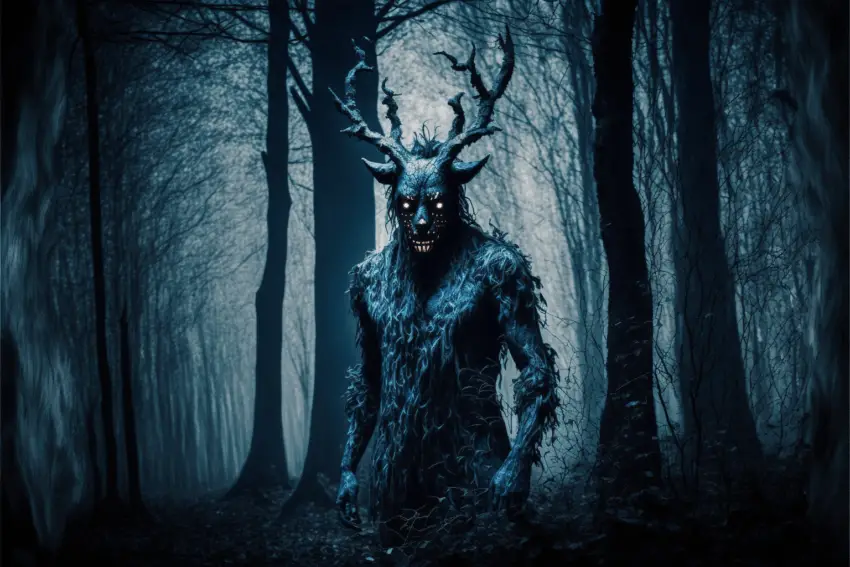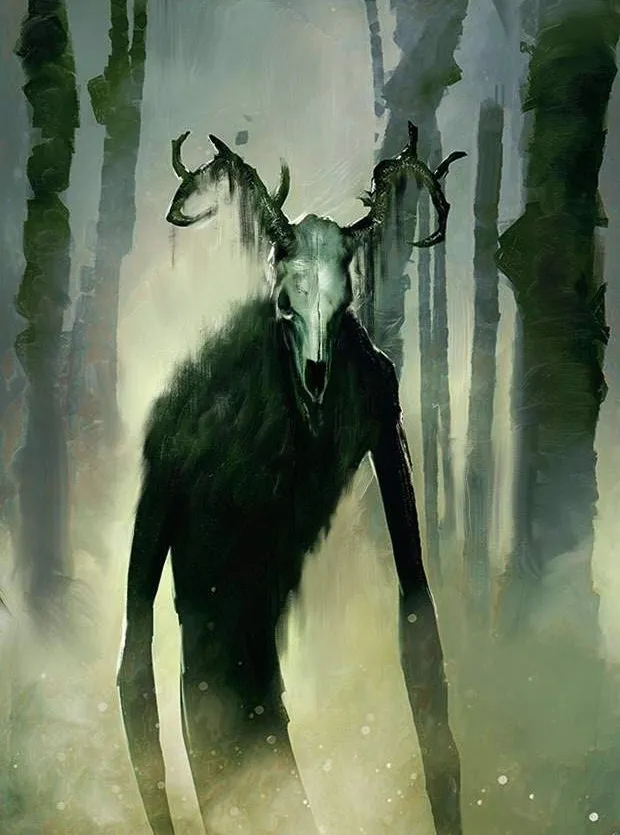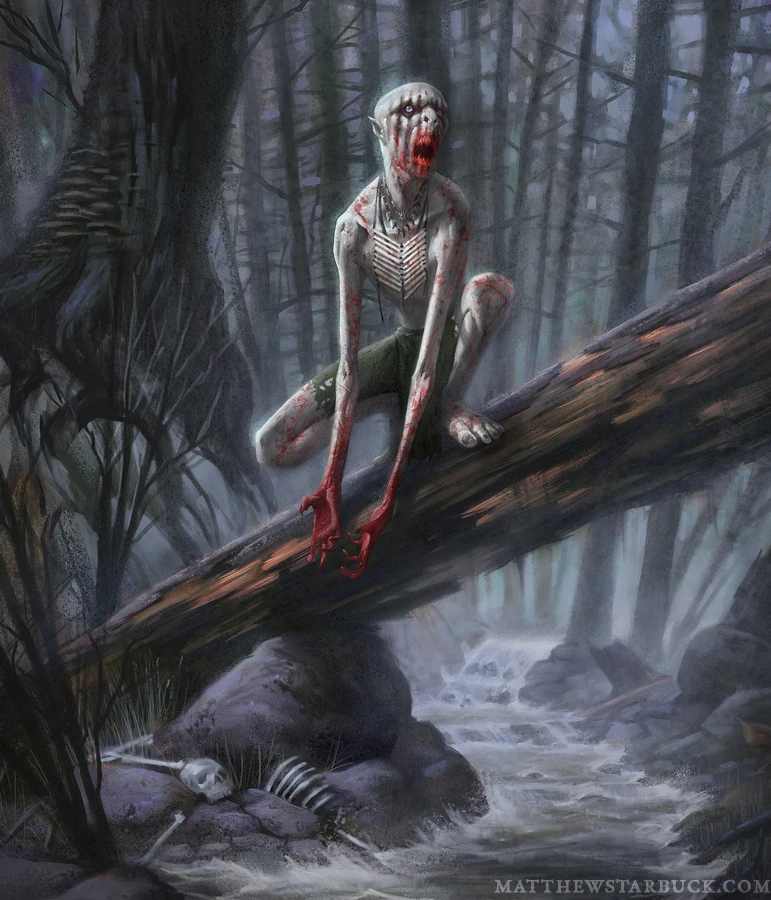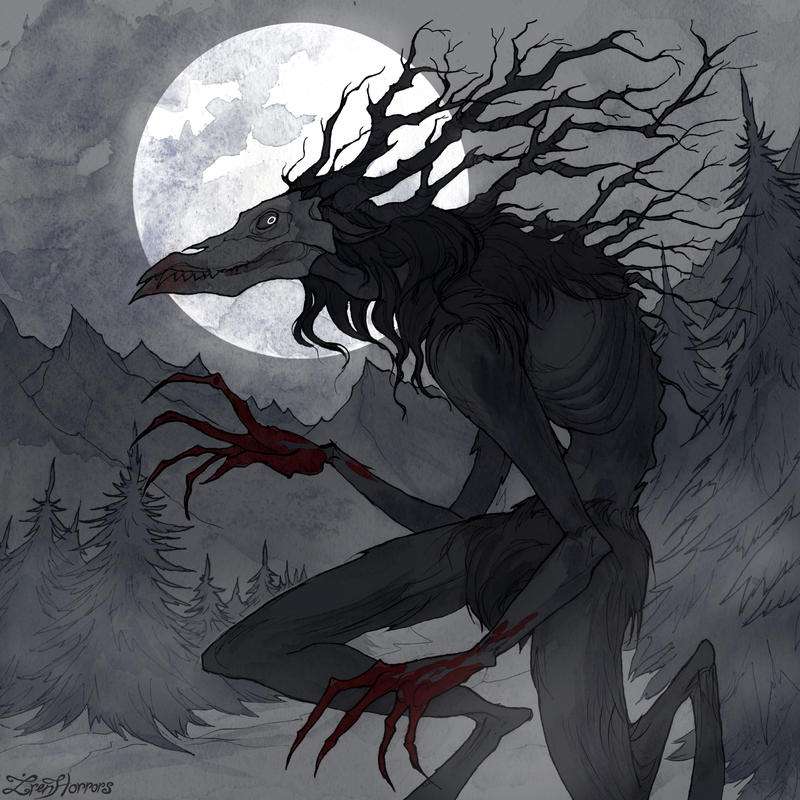The Wendigo is a fearsome creature deeply entrenched in the mythology and folklore of Native American tribes, particularly the Algonquian-speaking peoples. This supernatural being is associated with cannibalism, winter, and a ravenous hunger that can never be sated. In this article, we will explore the origins, reported sightings, intriguing facts, weaknesses, and the eerie phenomenon known as “Wendigo psychosis.”
What is the Wendigo? The Wendigo is often depicted as a malevolent, skeletal creature standing tall on elongated limbs. Its emaciated form is covered in decaying flesh, and its eyes glow with a haunting, otherworldly light. Legends describe it as a creature of immense strength, speed, and endurance. It is believed to possess an insatiable hunger for human flesh, particularly during harsh winters.
The Wendigo is a legendary creature deeply rooted in the mythology of various Native American tribes, particularly those residing in the northern forests of the United States and Canada. Descriptions of the Wendigo vary across tribes, but it is commonly depicted as a towering, emaciated humanoid with sunken eyes, jagged teeth, and antlers crowning its skull. It is said to possess an insatiable hunger for human flesh and a supernatural ability to possess and corrupt individuals.

Historical Origins The Wendigo originates from the folklore of various Native American tribes, including the Algonquian, Cree, and Ojibwe. The legend emerged as a cautionary tale against the dangers of greed, gluttony, and cannibalism. It symbolizes the spiritual corruption that arises from succumbing to these vices and the consequences that befall those who partake in such acts.
Intriguing Facts about the Wendigo
Supernatural Abilities: The Wendigo is believed to possess supernatural powers, including the ability to mimic human voices and luring unsuspecting victims into its grasp. It is also said to have heightened senses, allowing it to track prey even in the harshest conditions.
Transformation and Possession: In some legends, it is believed that individuals who resort to cannibalism in extreme circumstances may become Wendigos themselves. This transformation is accompanied by a gradual loss of their humanity, turning them into monstrous beings driven solely by their insatiable hunger.

Weaknesses While the Wendigo is portrayed as a formidable and relentless creature, folklore suggests a few weaknesses that can potentially deter or defeat it:
Fire: Fire is often considered the most effective defense against the Wendigo. The creature is believed to have an aversion to fire, as it represents purity, warmth, and light, all of which are antithetical to its dark nature.
Sacred Objects: Some accounts suggest that sacred objects, such as talismans blessed by spiritual leaders or shamans, possess the power to ward off or repel the Wendigo. These objects are believed to carry protective properties against supernatural entities.
Wendigo Psychosis Wendigo psychosis is a psychological phenomenon associated with the Wendigo legend. It refers to a condition where individuals experience an intense and irrational desire to consume human flesh, often triggered by extreme isolation, starvation, and hallucinations. Some argue that this psychosis is a cultural-bound syndrome specific to Native American communities, while others view it as a manifestation of psychological disorders under extreme circumstances.

History and Folklore
The origins of the Wendigo legend can be traced back to Algonquian-speaking tribes, such as the Ojibwe, Cree, and Innu. According to folklore, the Wendigo is believed to be a malevolent spirit or a manifestation of human greed and cannibalism. The legend serves as a cautionary tale, warning against the destructive consequences of giving in to one’s darkest desires.
Detailed Sightings of the Wendigo
- Historical Wendigo Accounts: Throughout history, there have been sporadic accounts of encounters with the Wendigo. These reports often depict encounters in remote forests and desolate areas. Witnesses describe seeing a tall, emaciated figure lurking among the trees, radiating an aura of dread and malevolence. Some claim to have heard the creature’s eerie howls piercing through the night.
- Modern Wendigo Sightings: In more recent times, alleged sightings of the Wendigo have surfaced, particularly in regions with a rich Native American cultural heritage. Witnesses describe terrifying encounters with a creature resembling the Wendigo, often accompanied by feelings of intense fear and unease. However, it is important to note that these sightings are largely anecdotal and lack concrete evidence.

Cryptid Theories and Speculation
Supernatural Entity: Many believe the Wendigo to be a supernatural entity, existing in the realm between the physical and the spiritual. It is thought to embody the consequences of human greed and the consumption of human flesh, serving as a reminder of the dangers of succumbing to our darkest impulses.
Psychological Phenomenon: Some theories suggest that the Wendigo is not a physical creature but a psychological phenomenon known as “Wendigo Psychosis.” This condition is believed to be a cultural-bound syndrome characterized by an intense craving for human flesh, typically associated with individuals living in harsh environments and facing extreme starvation.
Symbolic Representation: Another perspective views the Wendigo as a symbolic representation of humanity’s destructive nature and the struggle between civilization and primal instincts. The legend serves as a metaphorical cautionary tale, highlighting the dangers of unchecked greed and the consequences it can have on individuals and communities.
Unveiling the Wendigo: Conclusion The legend of the Wendigo continues to intrigue and chill those who dare to delve into its eerie world. Whether regarded as a supernatural being, a psychological condition, or a symbolic representation, the Wendigo serves as a cautionary figure, warning us of the perils of our darkest impulses and the destructive forces that lie within us. As we explore the realms of cryptids and folklore, the enigma of the Wendigo will persist, reminding us of the power of storytelling and the enduring allure of the unknown.


















